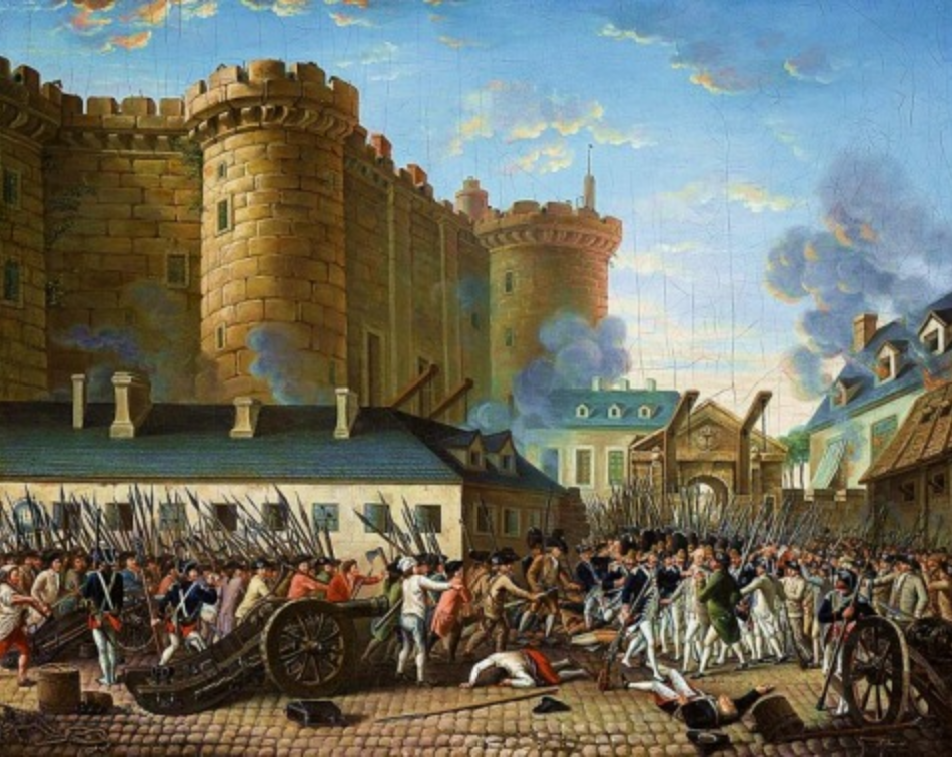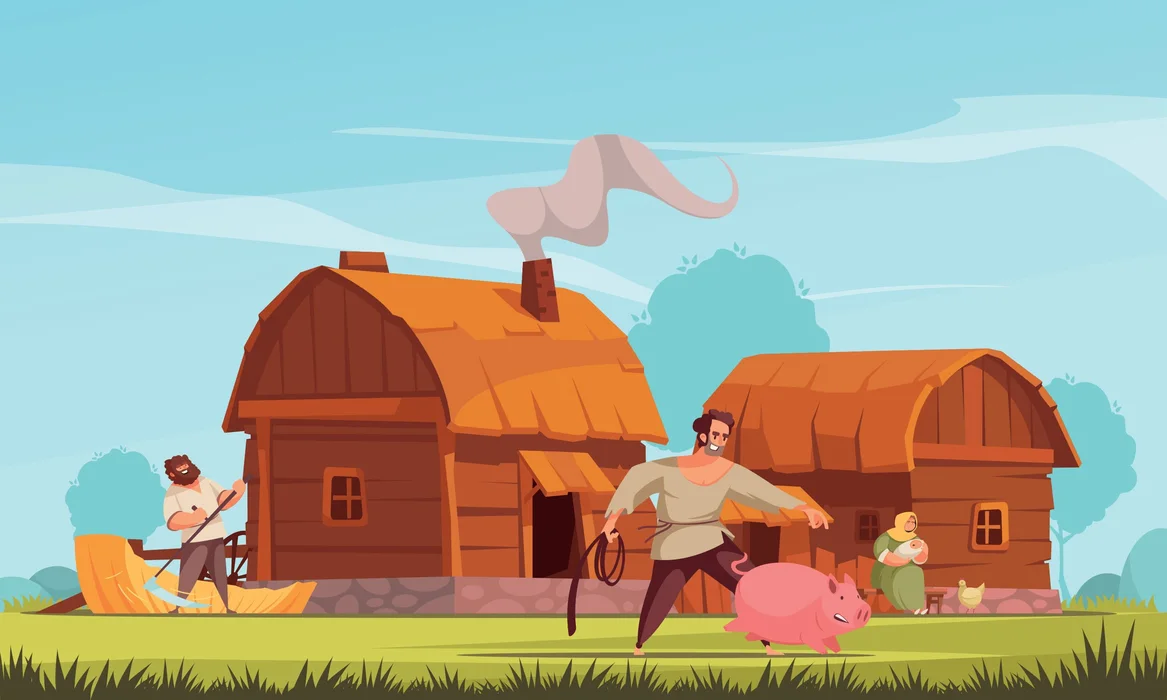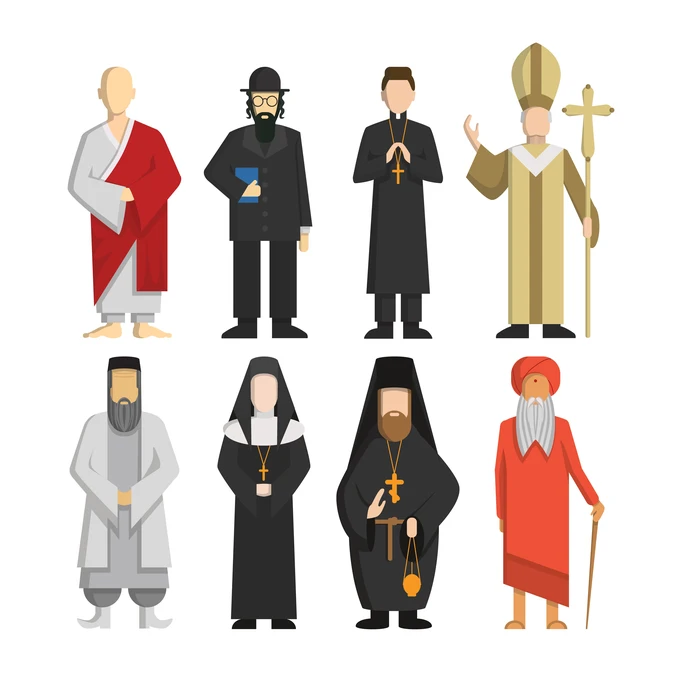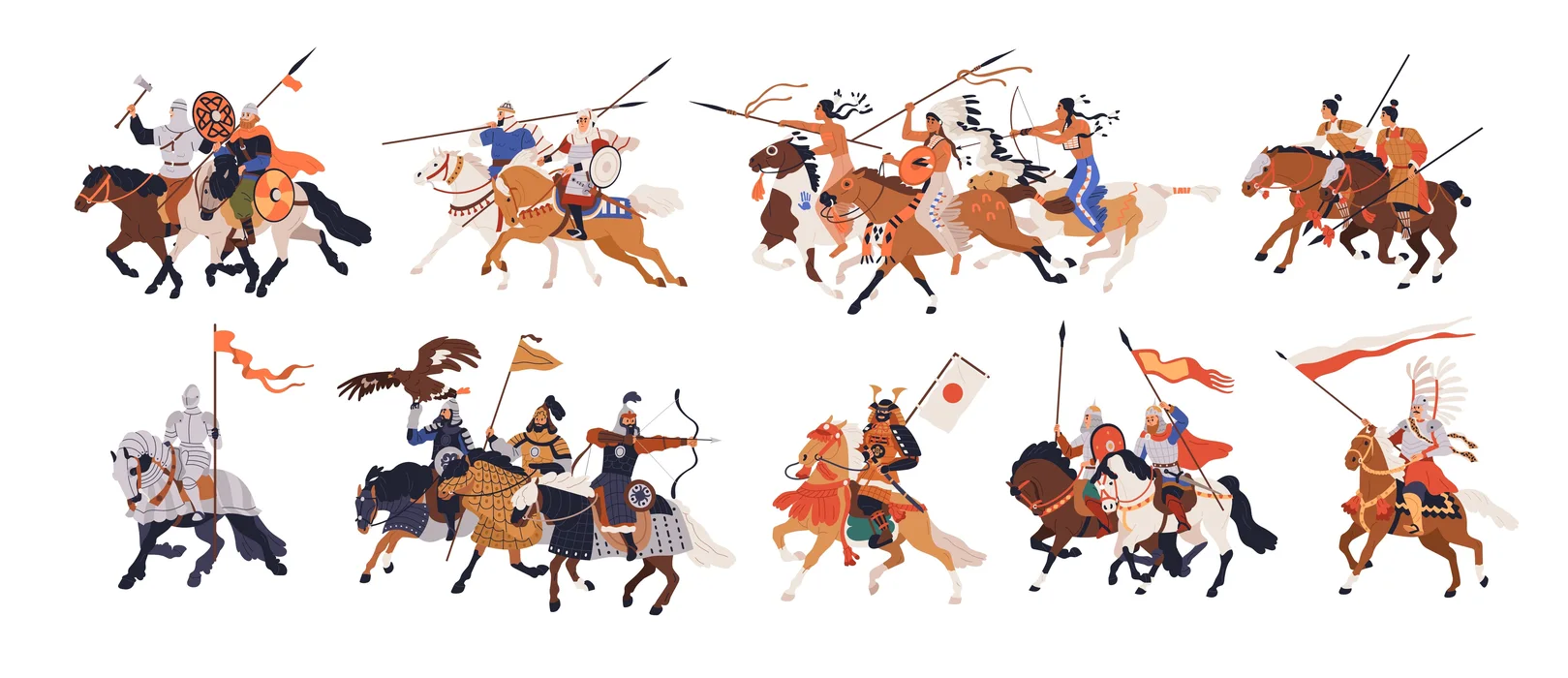Introduction
The late 18th century in France was a period of turmoil and hardship in society. People were constantly protesting against the reigning monarch Louis XVI, the working class and peasantry were becoming increasingly unhappy, the society was experiencing an economic crisis, people were protesting for their rights etc. On July 14, 1789, people started opposing the monarch violently, as the rumour was spread that the king had instructed the soldiers to fire on protesters. They made a military of 7000 people and stormed the state fortress jail, the Bastille, looking for ammunition. They destroyed government buildings and other facilities. This was the beginning of the French Revolution.

Society during 18th century France
French society is divided into 3 classes,
- The first class-which comprises clergy and wealthy people.
- The second class-which comprises noblemen.
- The third-class -comprises the other remaining society which includes all people, from merchants, businessmen, small peasants, servants etc.
- Both the upper classes had all the privileges while the third class played for their privileges and lived in poverty, with a lack of food and political recognition.
- With the population growth, the amount of food started falling short. And due to bad harvest, there was a severe scarcity of food. This led to fights between people for food and other resources.
- Due to the shortage of grains, the prices of the available food grains were increased to a great extent and as a result, the people of the third-class experienced food scarcity even more.
- The social conditions during the 18th century were very bad and hence were one of the reasons for the French Revolution to take place.
The outbreak of the revolution
The outbreak of the revolution took place in the following way-
- The controller general of finances, Charles de Calonne, organized the assembly of nobles in February 1787 to discuss the increase in tax to eliminate the budget deficit. He proposed the privileged class should be taxed, but the assembly rejected that proposal.
- The monarch convened the assembly of estate generals on May 5, 1789. The clergy, the noble estate, sent 300 representatives, while 600 individuals were sent by the third estate which had to assemble in the back of the room.
- In this assembly, each estate had one vote to give despite the number of individuals. The third estate wanted that each member should get the right to vote in the assembly. This demand of the third class was not accepted, and hence they walked out of the assembly.
- The representatives of the Third State then gathered on June 20 in the Versailles Hall where they proclaimed themselves to be the national assembly with the mission of drafting the French constitution to restrain the monarch’s authority. The first estates also joined hands with the third estate and the national constituent assembly was formed.
- In October, the assembly was introduced to restrict the powers of the king and distribute them amongst different institutions.
- The national assembly was indirectly elected and granted the authority to enact laws. Men over 25 who paid taxes were given the ability to vote.
- Although the king had signed the constitution, he secretly negotiated with the king of Prussia and other neighbouring rulers to send the troops to end the national assembly, but before it could happen the national assembly itself declared war on Austria and Prussia in 1792.
- Later that year, the assembly reassembled and decided to arrest the royal family.
- As part of the reforms, all men over 21 were now permitted to vote, regardless of their income.
- Following the election, the national assembly changed into the national convention, which on September 21, 1792, declared France to be a republic and dissolved the monarchy.
Summary
One of the most significant historical occurrences was the French Revolution. It was a struggle between the common people and France’s autocratic ruler. It was the first time that individuals battled for freedom and liberty. All subsequent revolutions were greatly impacted by the French Revolution, which marked a turning point in the struggle for liberty.
Frequently Asked Questions
1. What exactly were tithes?
Ans: The church collected tithes as a form of interest tax. Tithes included one-tenth of the agricultural output.
2. Which club did the Jacobins belong to?
Ans: The Jacobins Club was an underground organization made up of regular people during the French Revolution that was instrumental in overthrowing the monarchy in 1792. This group included small peasants, shopkeepers, laborers etc.
3. Why did the enraged mob storm the Bastille?
Ans: An enraged mob broke into the Bastille early on July 14, 1789, and destroyed the structure because it was a symbol of the monarch’s repressive and tyrannical rule.

Introduction
Romans practiced Christianity as their official religion, and after the fall of the Roman empire, it quickly expanded throughout Europe. Feudal lords and wealthy landowners embraced Christianity. Christianity gradually began to rule daily life in Europe. Pagans (non-Christians) were denied access to state institutions and even punished. The Church rose to become both the most influential institution and the largest landowner. Throughout the medieval era in Europe, the church and the king took on the role of the Piller of the feudal society. The Kings and the churches developed close ties. King Charlemagne gained the support of the Pope by accepting the title of “Holy Roman Emperor” from him in 800 AD in France.
The Three orders
French priests introduced the concept of three sections of society. The three estates or orders in medieval European civilization were established on the principle of grouping people into specific categories.
There were three divisions within society-
- First order- The clergy
- Second order- The nobility
- Third order- The peasantry
First order- The clergy
- The clergy was the earliest and most powerful order in medieval Europe. They were the ones who led society’s spiritual life through prayer.
- This order included all clergy members who worked for the Church, including priests, popes, bishops, and cardinals and they occupied the highest position on the social scale.
- The church possessed its own laws, property, and the authority to tax farmers.
- The church leader was the pope and the European Christians were led by the clergy.
- Physically deformed people could not be priests.
- The priests maintained monogamy.
- Bishops used to reside in magnificent palaces and enjoy an opulent lifestyle since they had enormous estates at their disposal.
- This elite had control over the social, cultural, and religious norms of feudal society in addition to managing the religious sector of society.
- The peasants paid an unofficial tax known as the “tithe” that represented one-tenth of their produce to the church.
- The second group of devoted Christians known as monks existed among Christians in the Medieval era in addition to the Church.

Second order- The nobility
- The second tier, following the priests, was the noble class. They were in a prominent position in the government.
- In general, warriors were thought to be under this category.
- The nobles had various advantages and were free people with property rights.
- They were only required to fight for and support their master in battle. It was their one and only duty.
- They received compensation in the form of land in return for this.
- They serve the king as a vassal, which requires them to perform duties for their lord.
- They ruled as the king and were the lords of their domain.
- The peasant served as the nobility’s vassal and appeared in their court for legal proceedings.
- Armies of the Nobility were known as “feudal levies”.
- Large landowners owned manor houses, which were referred to as manorial estates.
- The manorial estates controlled the lands in the villages, where the peasants lived and worked.
- They had everything they needed and led a luxurious life.
- Another class of nobles was the knight, who received a title and a plot of land from the king.
- Knights were expert warriors who made a commitment to fight for their lord whenever necessary.

The third order: The Peasantry
- The third and lowest class in society was the peasant. They were farmers and manual laborers. They had no luxuries or proper recognition in the society.
- The men were forced to fight as foot troops when the monarch required them.
- Peasant women and children were required to work for lords.
- There are two types of peasants- the Free Peasants and the other the Unfree Peasants of Serfs.
Free peasants-
- They owned their own land and served as the lord’s tenants.
- Women and children had to work in the lords’ households for a set amount of time and the lord received all the proceeds none was given to the peasant class.
- The males had to serve in the military for at least forty days every year.
- Additionally, they had to perform community service tasks like repairing the well, creating new roads, etc.
Serfs or Unfree Peasants
- Serfs worked on the lord’s land for free and received no pay.
- The lords had complete control over the serfs, and they were not permitted to leave the estates.
- Even to marry, the surfs had to get their lord’s approval.

Summary
Based on their occupation and socioeconomic standing, European society was divided into three orders or classes during the medieval era. The clergy was the highest and most powerful order, nobility was the second most powerful order, and peasants were the third and lowest order. The clergy included priests and people involved in religious pursuits. The nobles were lords and kings who belonged to the military class. They controlled the most land. The majority of people in society were peasants, who were farmers and slave laborers who served the lords.
Frequently Asked Questions
1. Who were monks?
Ans: The faithful Christians known as monks had lonely lives. They were not Church members. Monks led a simple life in contrast to clerics. They lived in monasteries or abbeys. Monks swore to spend the rest of their lives cultivating and praying in the abbeys. The abbeys were generally located far from any populated areas. In contrast to the church, it was accessible to both sexes. Monks weren’t permitted to get married. They contributed to the dissemination of the arts, and several works of writing from the late 13th and early 14th centuries describe them.
2. What was the impact of the churches on society?
Ans: The church made an effort to mold the social environment and living circumstances to the Christian way of life, in the following ways-
- Churches began commemorating Christ’s birth and the day of his resurrection.
- New Christian holy days have taken the place of pagan holidays.
- Peasants would enjoy the fact that they didn’t have to work on Holy Day.
- People began going on pilgrimages to large churches or martyrs’ shrines.
- The custom of baptizing a newborn child became prevalent.
- The custom of holy days, when people were granted days off from labor to pray, evolved into holidays where people could relax and not go to work.
3. Who came up with the concept of social norms in society?
Ans: According to the French Bishop “Adalbero of Laon,” some people work, some people pray, and some people fight in society. The concept of three social orders was born from there, which led to the formation of The Three orders, Clergy, Nobility, and Peasantry in European society.



